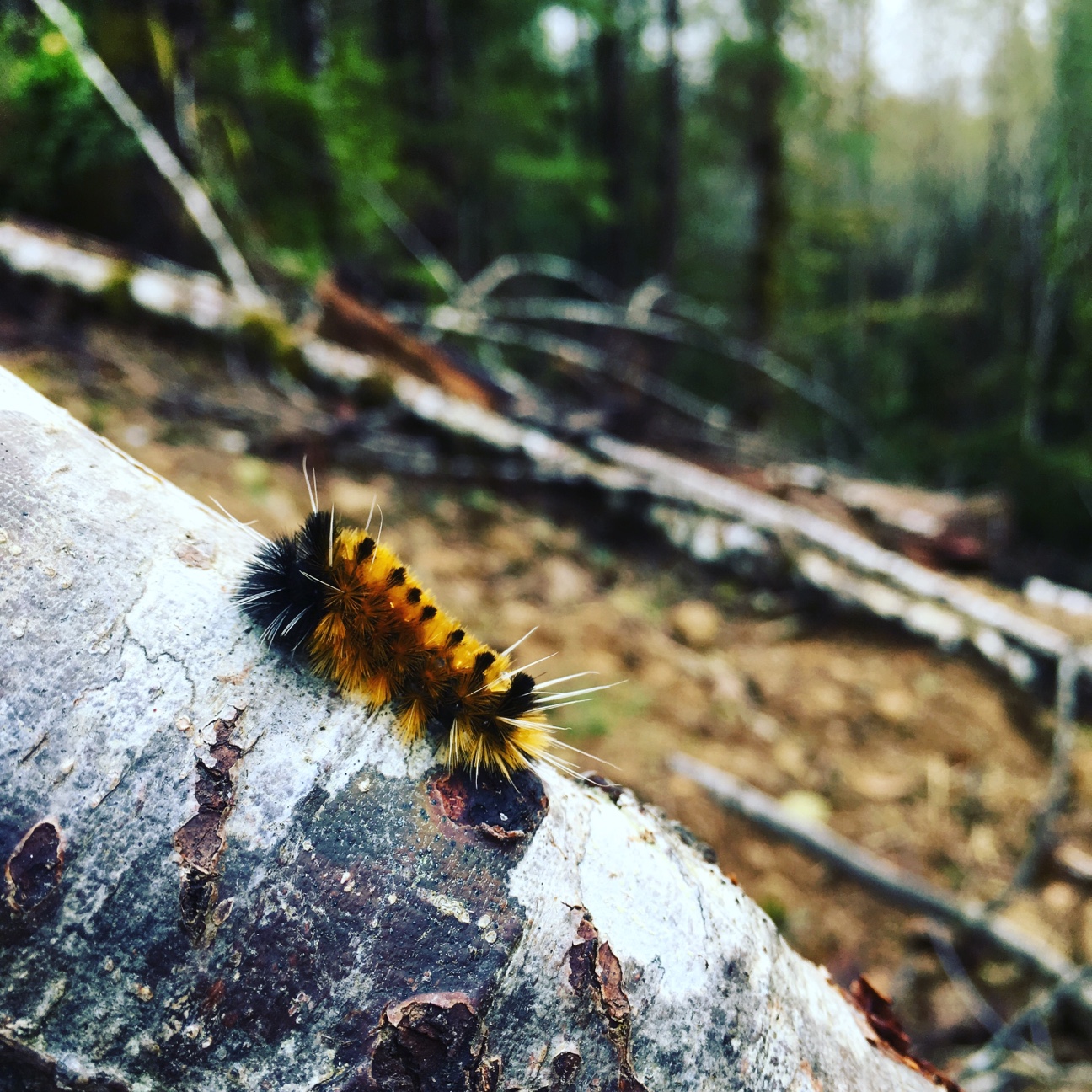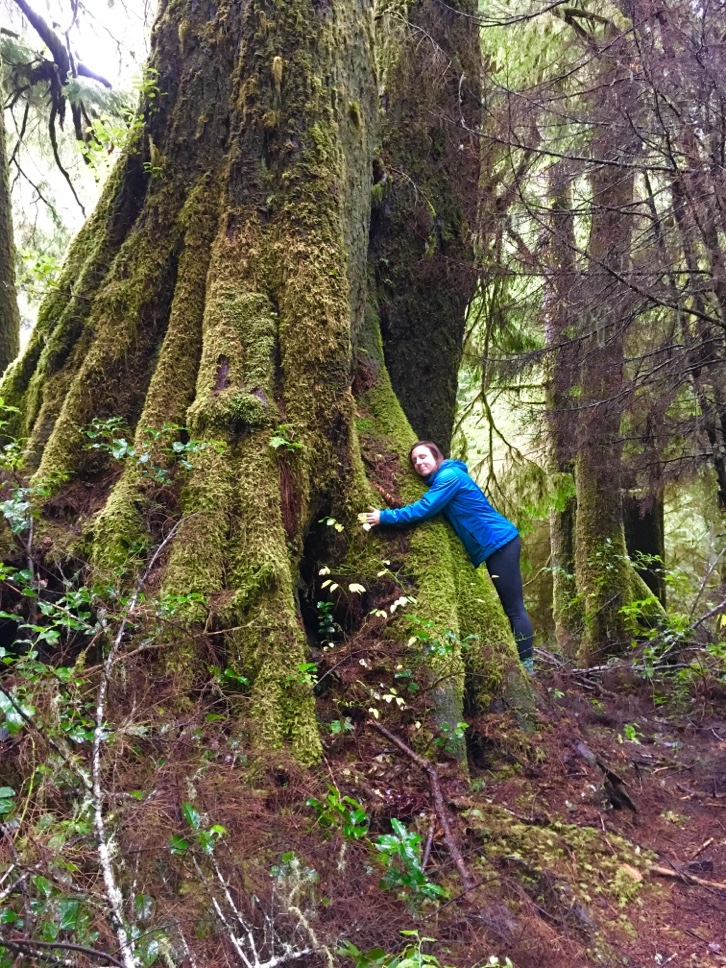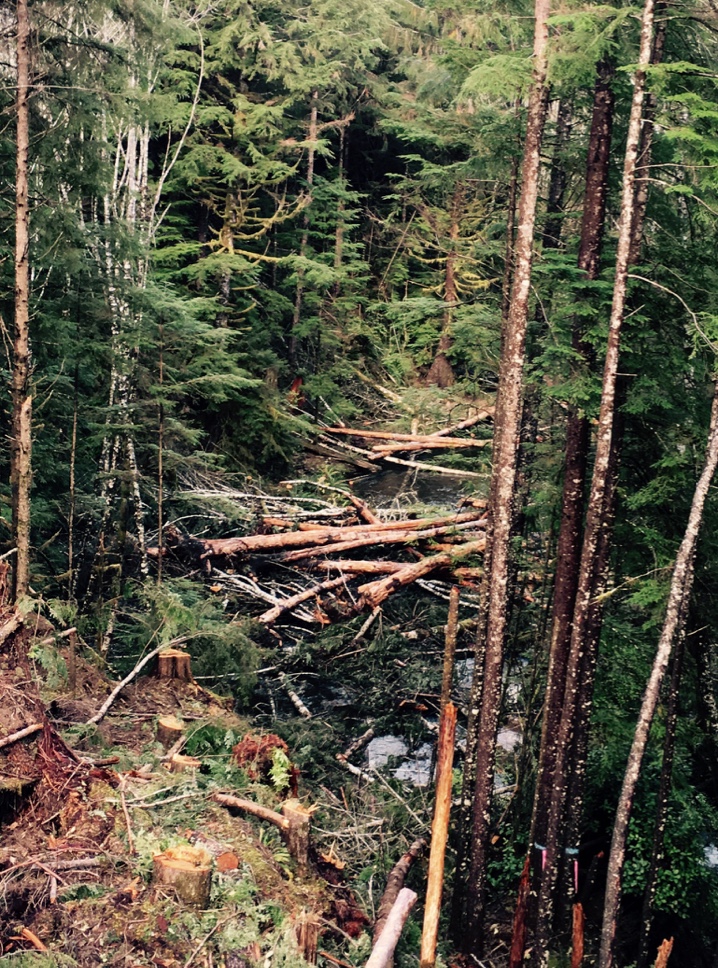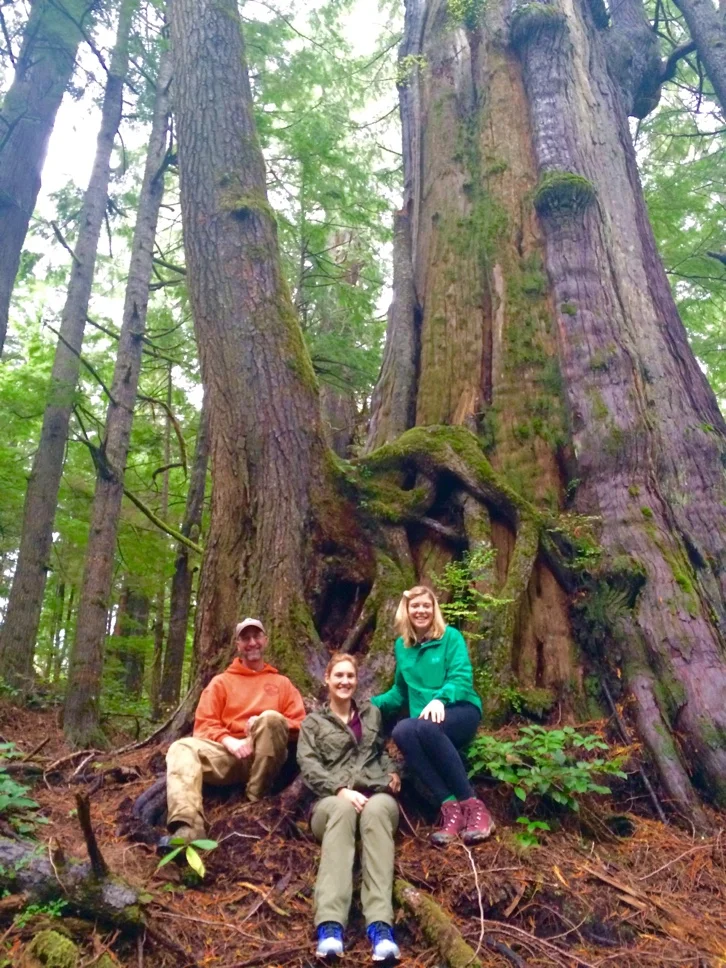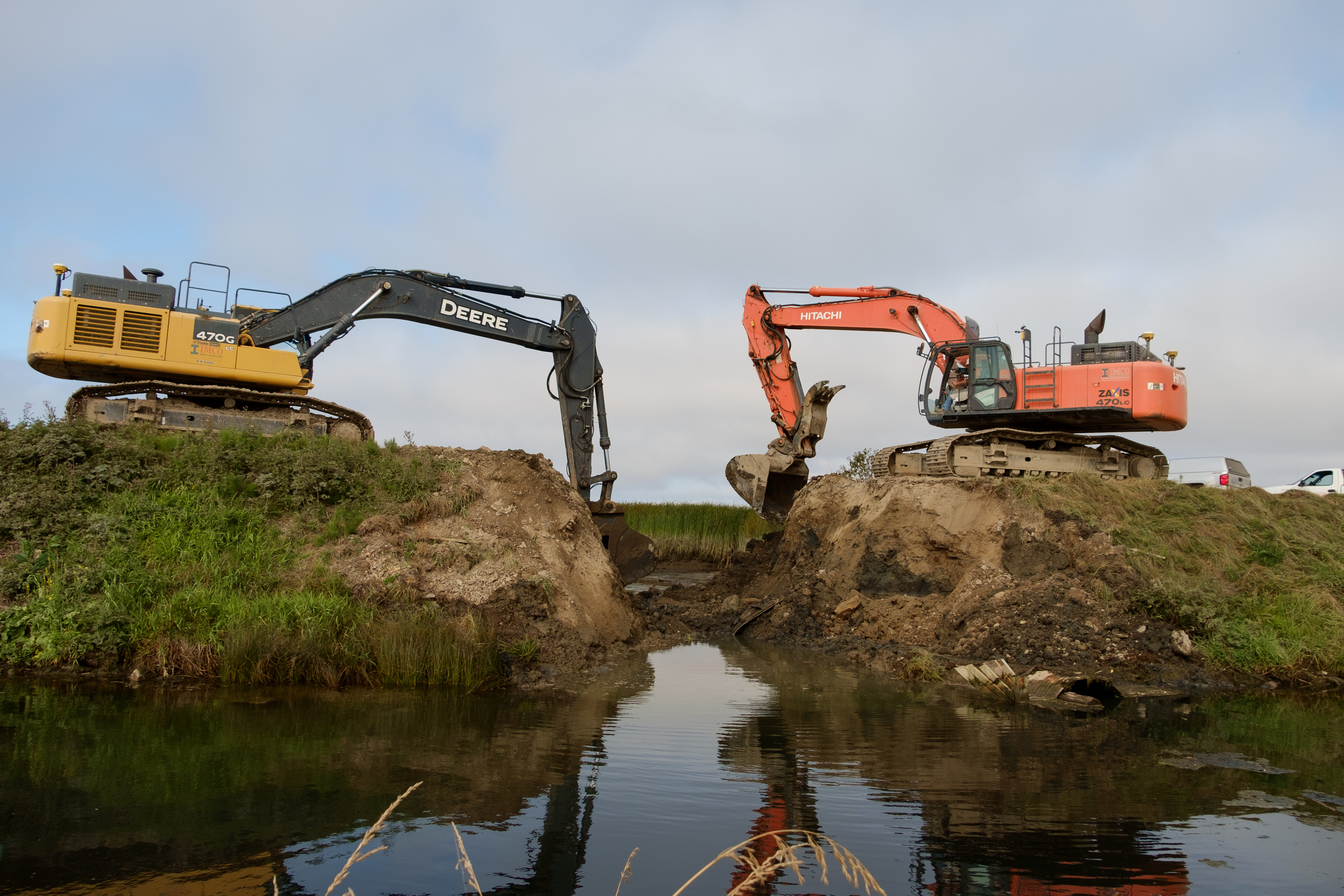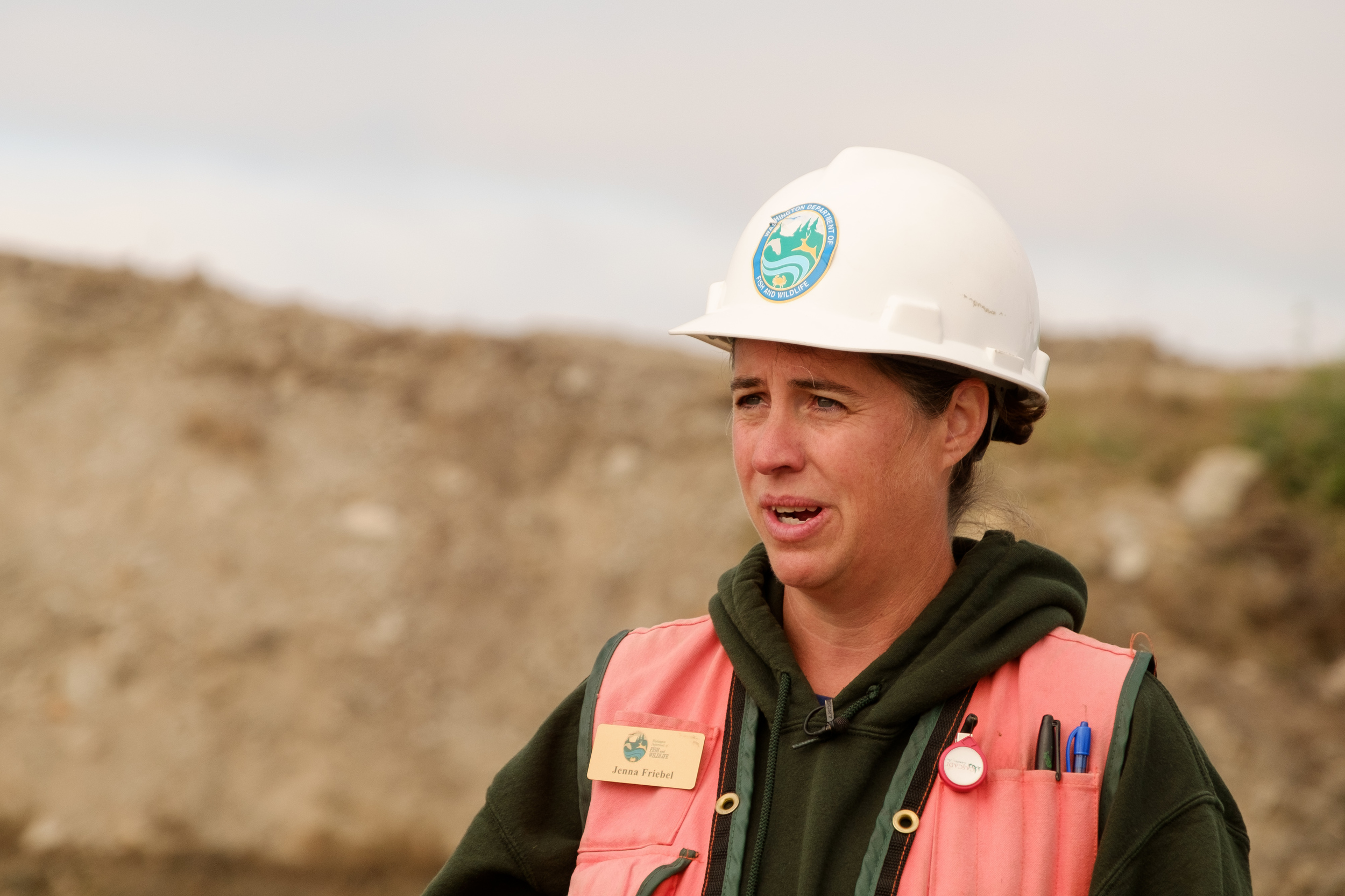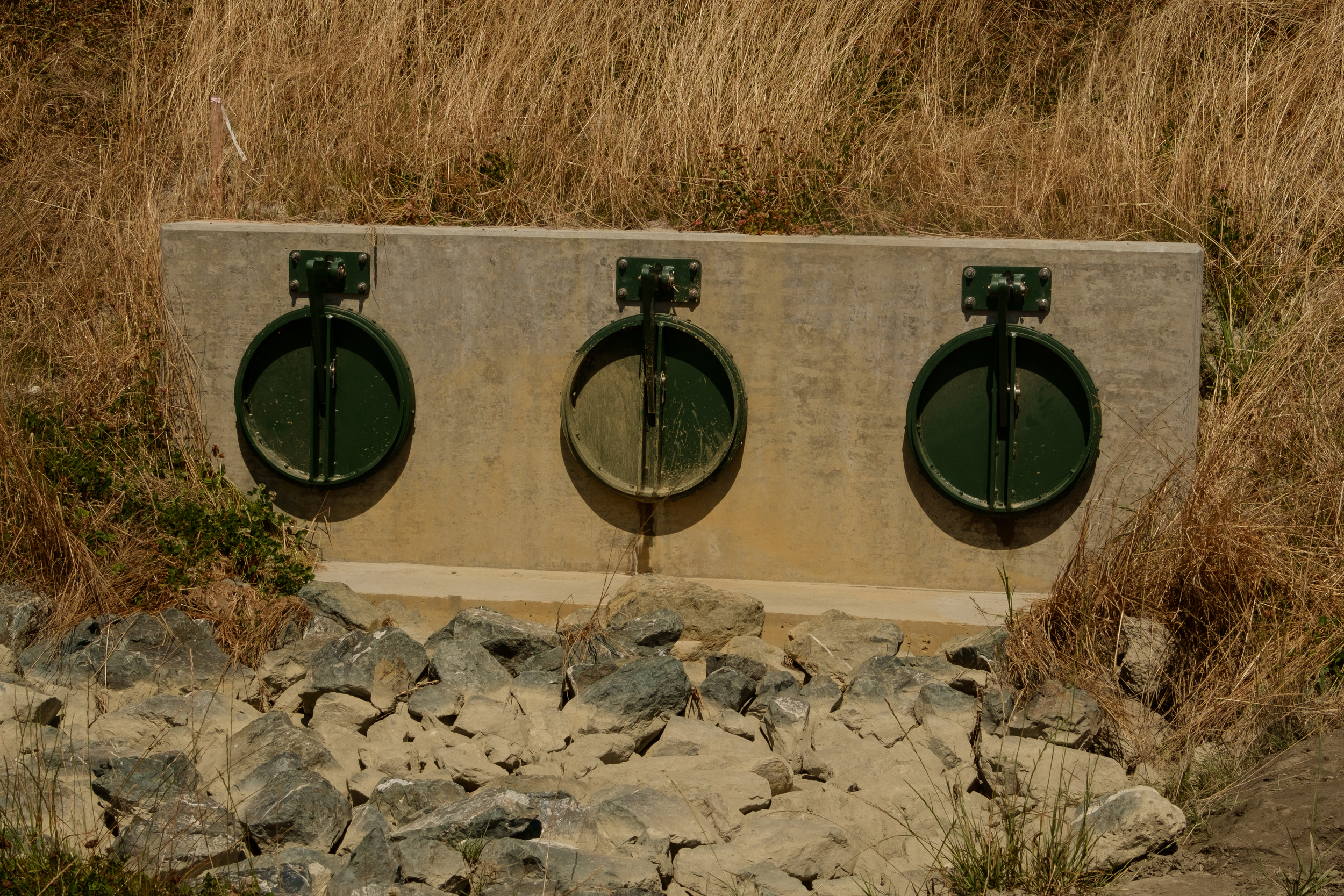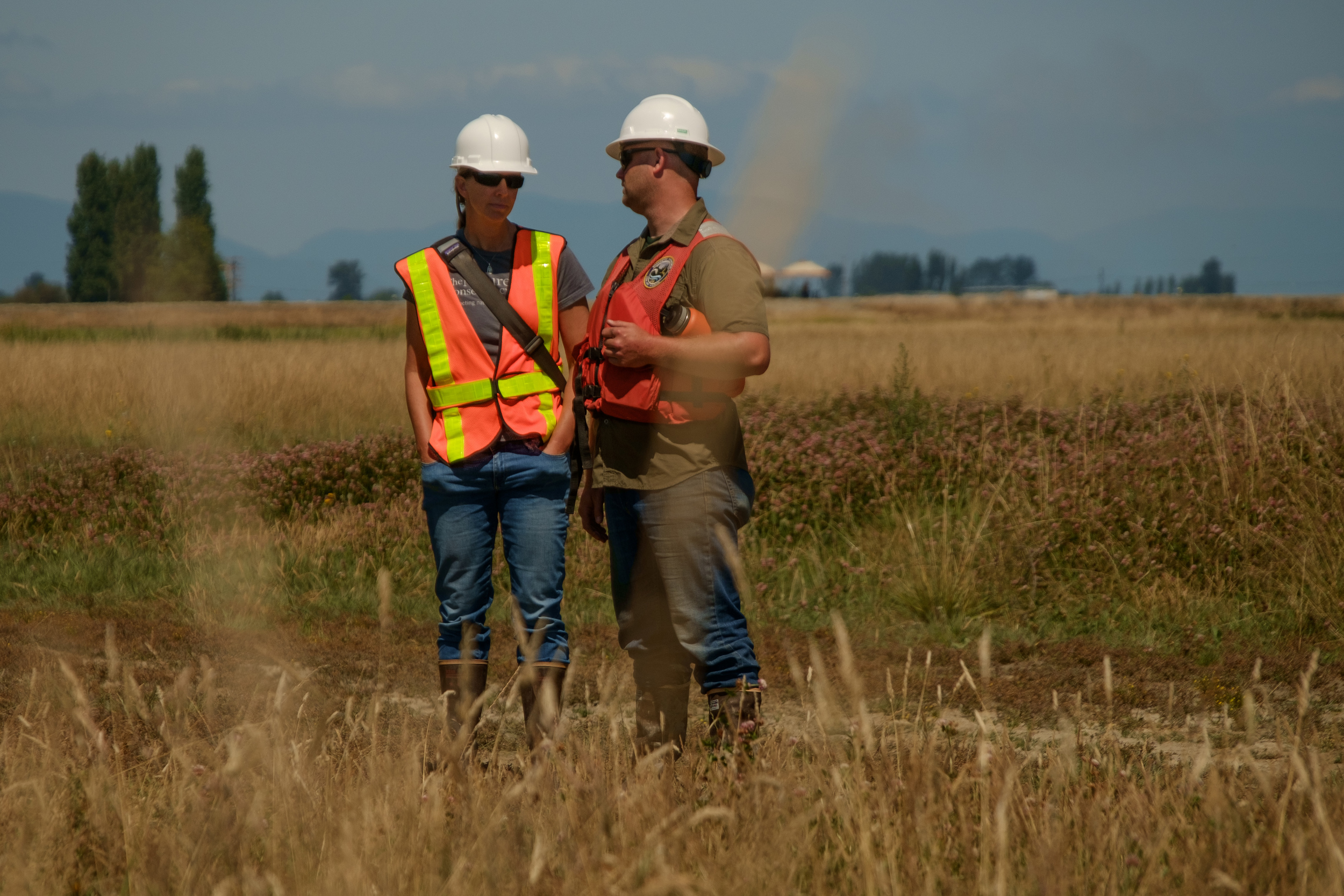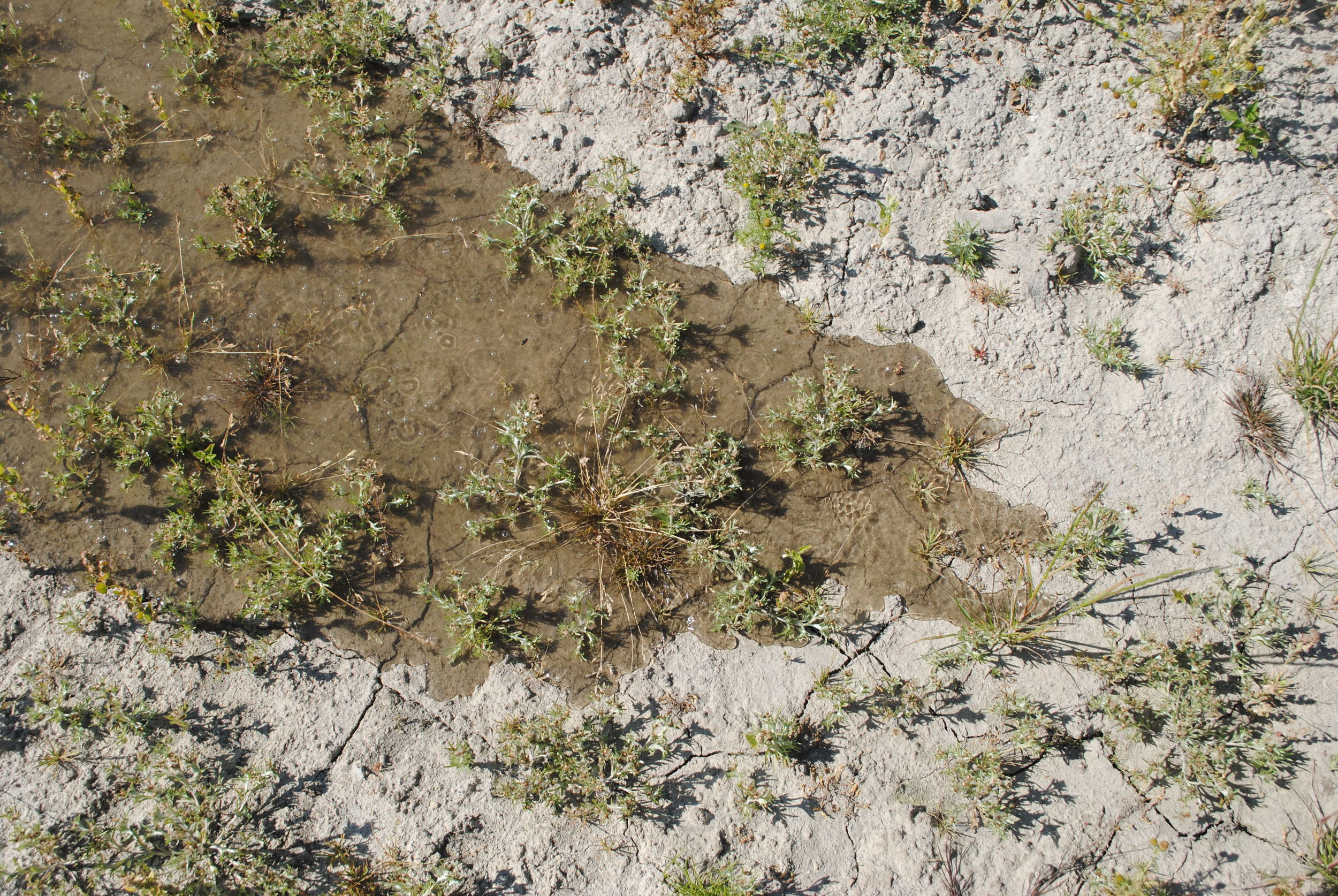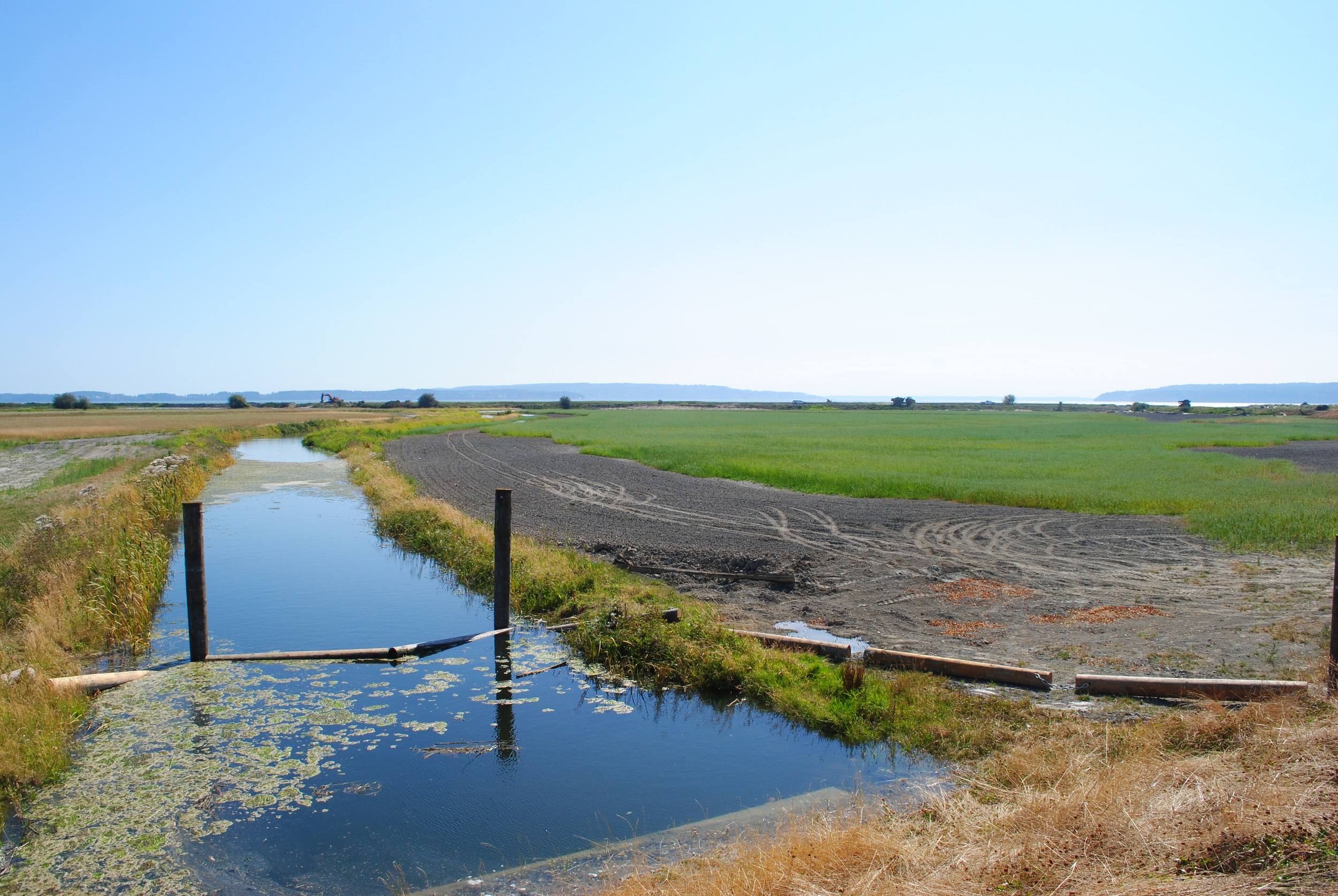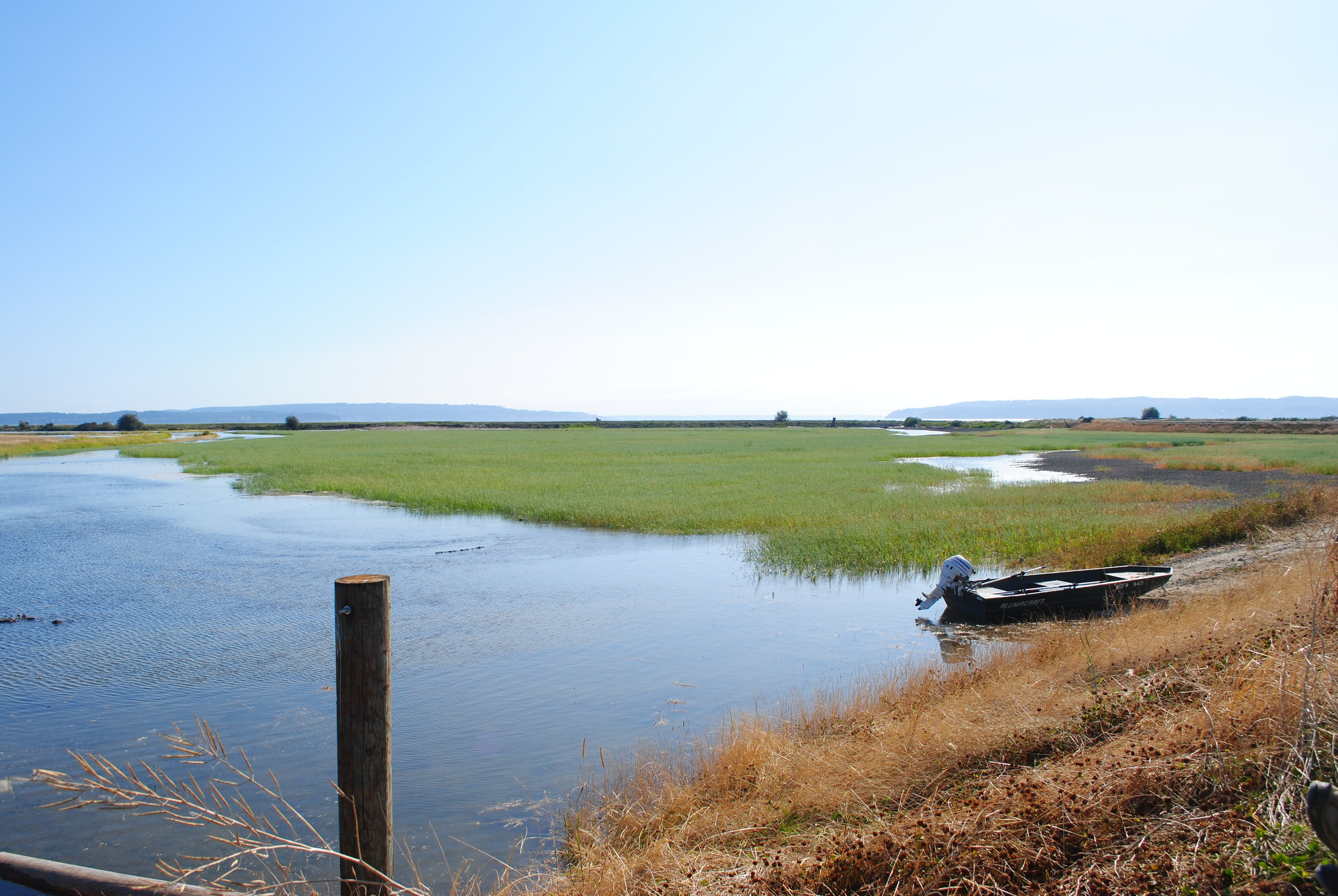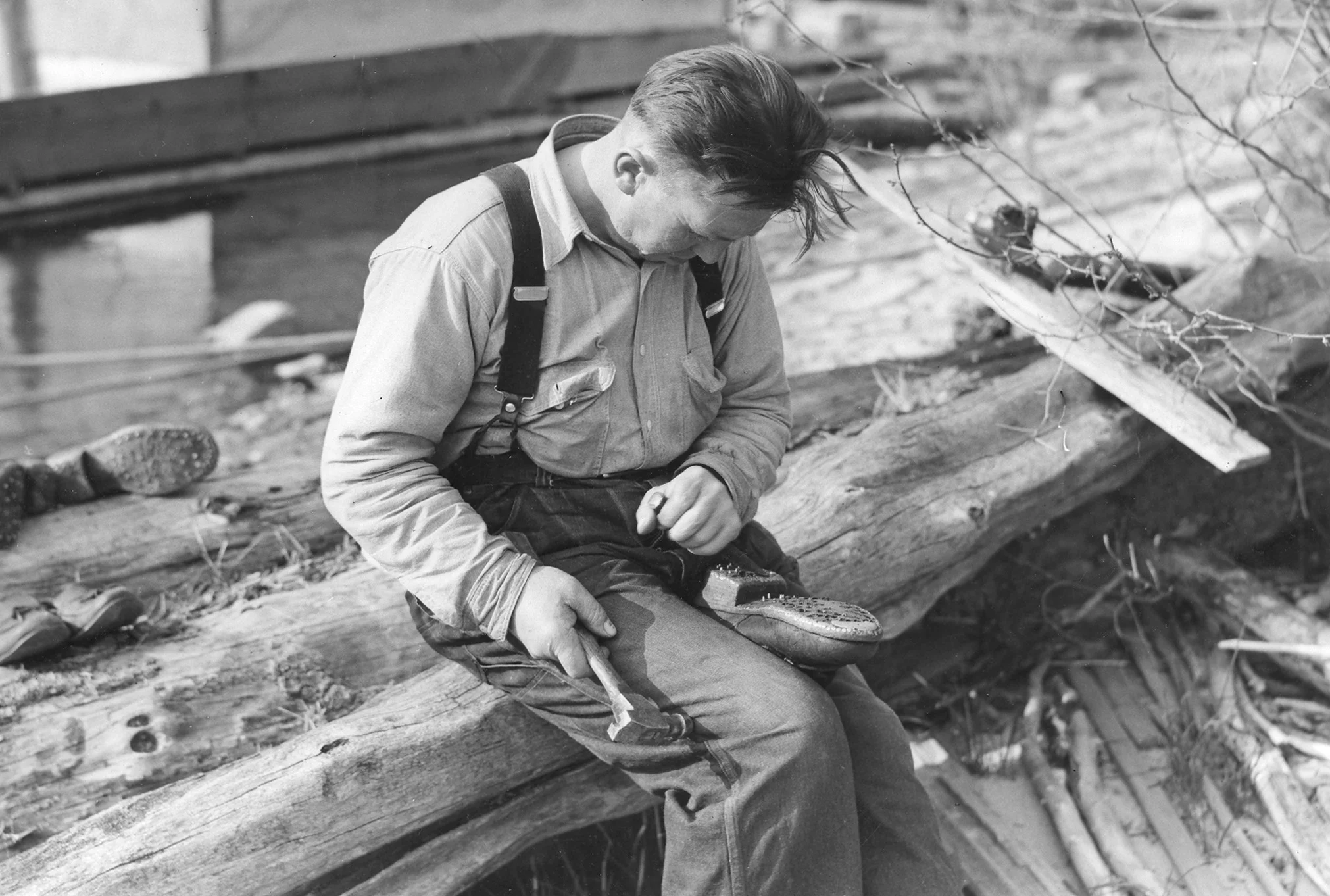Nestled in the cliffs in Moses Coulee is an import desert water sources that every springs attracts thousands of Pacific Tree frogs. I came to Whisper Lake for a night concert. It was anything but quiet. The chorus of frogs was soothing, calming—the quintessential sound of spring.
Candid Camera: A view into Cle Elum Ridge's Wildlife Project
Summertime Science
Two students from The University of Washington completed science internships with The Nature Conservancy over the summer. Stephanie Passantino and Eileen Arata worked with us on several projects including Ellsworth Preserve camera trap and tree reproduction research projects, an eastern forests literature review, Greening Research in Tacoma, and Port Susan Bay Preserve restoration.
Join us as both Eileen and Stephanie tell us about their experiences this summer in the field!
Nature Moment: Mama Bear & Cub, and More, at Ellsworth Creek Preserve
Catching Animals... on Camera in the Ellsworth Creek Preserve
Trail Cams reveal wildlife
Winter birds brighten Washington
Big cat at Ellsworth Creek Preserve
From Trees to Seas: Marine Team Visit Ellsworth Creek
Written and photographed by Claire Dawson, Hershman Marine Policy Fellow
On our way to the Marine Resource Committee Summit in Long Beach, Washington, several members of the Marine Team here at The Nature Conservancy got the chance to visit forester, Dave Ryan, at Ellsworth Creek Nature Preserve. This 7,600 acre preserve encompasses an entire watershed, and links with the Willapa National Wildlife Refuge. Together these provide more than 15,000 acres of refuge to species like nesting marbled murrelets, cougar, black bears, elk, amphibians, and salmon.
Our visit began with a tour of the recent log jams that have been installed upstream on Ellsworth Creek. These jams, while appearing to be no more than piles of brush and logs thrown haphazardly across a stream, are in fact an important natural feature of creeks and rivers. For decades, woody debris was removed from rivers and streams to promote navigation, recreation and beautify river beds. However, recent research has shown us that removing debris is detrimental to fish habitat. Recent creek restoration efforts have therefore focused on rebuilding these essential features.
By forcing the water over, under and around them, log jams slow the water and allow historical flood plains around creeks and rivers to fill and pool with water, providing a more favorable environment for returning adult salmon and growing fry. Slowing water flow also allows the deposit of larger sediment like rocks and rubble further upstream, creating the habitat needed for salmon to build redds and lay their eggs. These newly established woody areas also lower stream temperature by providing shaded environments, and somewhere to hide. Properly engineered, they also serve to reinforce creek beds, preventing erosion.
The Ellsworth Creek Preserve also encompasses an area of old growth Sitka spruce and Western red cedar. Following a one-mile trail down into the valley, we walked among giants, some over 800 years old to what’s known as Ellsworth Beach. With the recent rains and cooler weather, the group had hoped to see that the Chum had arrived in this part of the creek. Alas, the Chum prefer to arrive in solitude, and waited until the following day to show up in droves.
Our visit to Ellsworth served as a wonderful reminder of the interconnectedness of nature – and the various elements that work together to create habitat that is ‘just right’ for some of our region’s most beloved species. Conservation progress has implications far beyond the lands we walk on, and progress made on land has rippling effects all the way out to the deep blue sea.
Visit Ellsworth Creek Preserve
Pleasantly Prickly
Written & Photographed by David Ryan, Field Forester, Willapa Bay
Earlier this month I was scouting a project that we are planning with our Willapa NWR partners when I came across this prickly fellow. Porcupines are relatively common denizens of forests across America. Historically, many states across the nation paid bounties for these slow moving rodents. However, this one had no qualms about walking right up to me and placing his nose on my toes to determine whatever it is that porcupines need to know about human feet. After a few minutes’ assessment, it learned what it needed to about my feet and went back to the more important business of munching vegetation.
The common name of the porcupine is derived from the Latin porcus, pig, and spina, quill or spine;essentially meaning quill pig. A common myth is that porcupines can “shoot” their barbed quills at potential predators. This is untrue and the quills only become problems for those intrepid and foolish enough to actually make contact with the porcupine. The defense mechanism is so effective that porcupine have few predators. Although bobcat, cougar, coyote, wolf, or other predator may attempt to make a meal of our rodent friend, the repercussions are severe enough that few make a second attempt. Although some stubborn domestic canines refuse to learn the lesson the primary consistent and persistent predators are fishers and humans.
Why would states pay for exterminating these docile creatures? Since the inner bark of trees proves to be an important food source for porcupines, especially in winter, many forest managers sought to eliminate these rodents in an effort to reduce porcupine induced tree damage. In the early and middle 20th century, bounties were paid by the nose, ears, or feet as proof of a porcupine kill. Depending on the area, bounties were about 25 to 75 cents per porcupine. By the 1980’s porcupine bounties had largely ceased throughout the country. Not for any ecological or humanitarian reason; they were deemed to be an ineffective policy since they amounted to a subsidy of activities which some people were already doing and the fee was not high enough to induce more people to hunt more porcupine.
At Ellsworth Creek Preserve, porcupines are accepted on the landscape. And based on this encounter, I look forward to another meeting … as long as I don’t have my dog with me.
Collaboration Works for Forest Restoration
Written by Lloyd McGee, Eastern Washington Forests Program Manager
Stewardship project launched in the Colville National Forest.
Last week we celebrated with Congresswoman Cathy McMorris-Rodgers to kick off an innovative forest stewardship project in the Colville National Forest. This first of its kind stewardship partnership between a national forest and a private company is a pilot aimed at restoring the 54,000-acre Mill Creek watershed—a beloved area near Colville that’s been well-used by people for a century.
Vaagen Brothers Lumber (VBL) will carry out forest treatments on more than 17,500 acres of this landscape. By removing smaller trees and leaving the big ones, this project will reduce the threat of wildfire while at the same time supporting local jobs, as small-diameter timber is harvested and processed by Vaagen Brothers.
But it’s not just harvest—these are complete forest restoration projects that include forest thinning and controlled burning to reduce forest fuels, restore streams and riparian zones, repair roads and close some roads harmful to fisheries and water quality, and restore wildlife habitat. No old growth trees will be cut.
Congresswoman McMorris-Rodgers has been instrumental in laying the groundwork for this project, working with stakeholders and the Forest Service to develop this public-private approach that enables the private sector to fund the presale environmental requirements, carried out here by Cramer Fish Sciences.
This approach was developed by the Northeast Washington Forestry Coalition, or NEWFC, of which The Nature Conservancy is a member. NEWFC is an alliance of timber companies, conservationists, business owners, tribes and forest professionals.
Work on the A to Z began last week after an onsite ceremony Aug. 12 with Congresswoman McMorris-Rodgers, VBL President Duane Vaagen, VBL Vice-President Russ Vaagen, VBL Resource Manager Josh Anderson, Lloyd McGee from the Conservancy and NEWFC, NEWFC Executive Director Gloria Flora, Stevens County Commissioner Steve Parker, Colville National Forest Supervisor Rodney Smolden and other local community members. Sen. Maria Cantwell has also supported this project. She was unable to attend the Aug. 12 ceremony, but visited the area the day before and met with stakeholders.
Learn About Our Forestry Work
Witnessing Change at Fir Island Farm
Written & photographed by Julie Morse, Regional Ecologist
For thousands of years it was an estuary. Then for 100 years it was farmland. Now, it’s estuary again.
More or less halfway between the mouths of the North Fork and the South Fork of the Skagit River, Fir Island Farm sits on the edge of Puget Sound with stunning views of Mount Baker. For the last 100 years it has produced potatoes, corn, wheat and other crops and drawn visitors from far away every winter to see the flocks of thousands of Snow Geese that congregate here in the winter
The Skagit River itself defines this place. It’s the largest river entering Puget Sound, fed by the glaciers of Mount Baker and the North Cascade peaks it supports all five species of Pacific Salmon. For Skagit’s Chinook Salmon, a threatened species protected under the Endangered Species Act, estuary habitat at the mouth of the river is a limiting factor in their recovery. Tidal marsh habitat here is a quarter of what it was historically. The Fir Island Farm restoration of 131 acres alone is projected to increase smolt production by at least 65,000 every year.
From a farmer’s perspective, it’s always painful to see farmland lost, whether it’s for salmon restoration or development of a new sub-division in rural areas – the impact on their bottom line is the same. Farmer’s need a critical landmass to maintain a viable economy, and particularly in the Skagit -located halfway between Seattle to the South and Vancouver to the North, development pressure in recent years has encroached from all directions. Add the importance of the Skagit estuary for salmon recovery projects, and combined the pressures on this prime lands are enormous.
And yet, local farming groups support the Fir Island Farm restoration because the project design includes critical improvements to their infrastructure. A state-of-art pump house and new setback dike will provide improved drainage capacity and flood protection for future sea level rise and storm surge conditions thus serving as a model for much of Western Washington. This project is also supported because it enables the local diking districts’ to make repairs and do maintenance on their flood and drainage systems. It also prioritizes restoration of state owned public lands, rather than private farmland.
The Fir Island Farm restoration project is a model of TNC’s approach to conservation and restoration in the complex and populated landscapes of Puget Sound. Not only does the project design include drainage and flood improvements for local farmers, it also retains a portion of farmland to manage for Snow Geese. The project design accommodates future sea level rise and is designed to protect the adjacent lands from coastal storm surge, is a model for adapting to climate change. Designing and implementing complex multiple benefit projects like this is no small feat; and our hats go off to WDFW’s Project Manager Jenna Friebel and her team.
Monday afternoon as we stood on the new dike and watched the first flood tide in 100 years return to Fir Island Farm, I think all of us TNC staff felt somewhat in awe, and incredibly humbled. Humbled to be alongside such a large group of partners - all who have had some piece in making the project happen. And in awe of how dynamic this place is. What we witness today is just a snapshot in time; it’s a work in progress.
Now it’s time for Mother Nature to take over. To start excavating new channels and bringing in large wood to create habitat complexity for salmon fry, to restore sediment flow that will create rich muddy intertidal stopover sites for migratory shorebirds, and continue restoring this incredible piece of the Skagit estuary.
LEARN MORE ABOUT SKAGIT VALLEY
Stream Side for Conservation
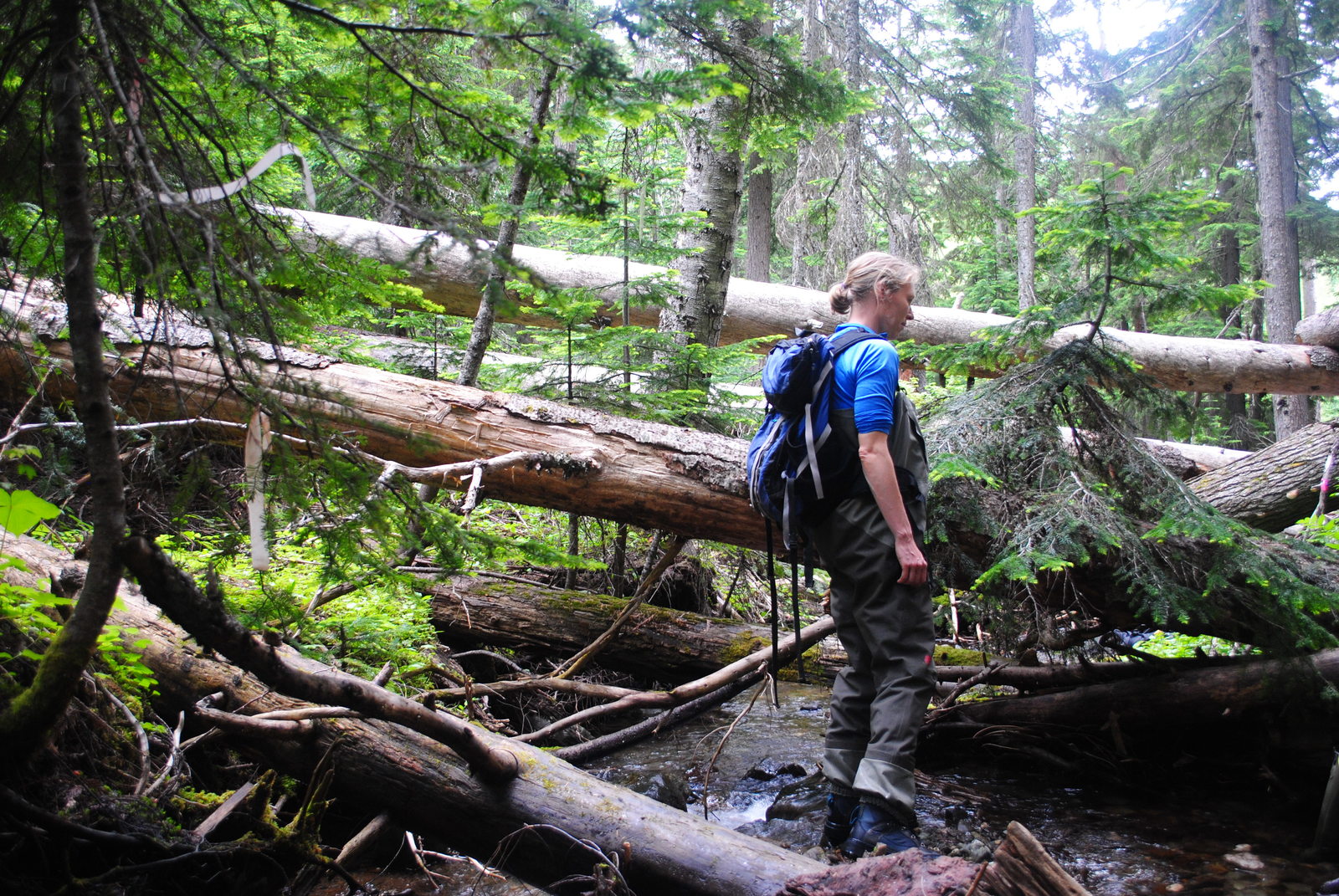
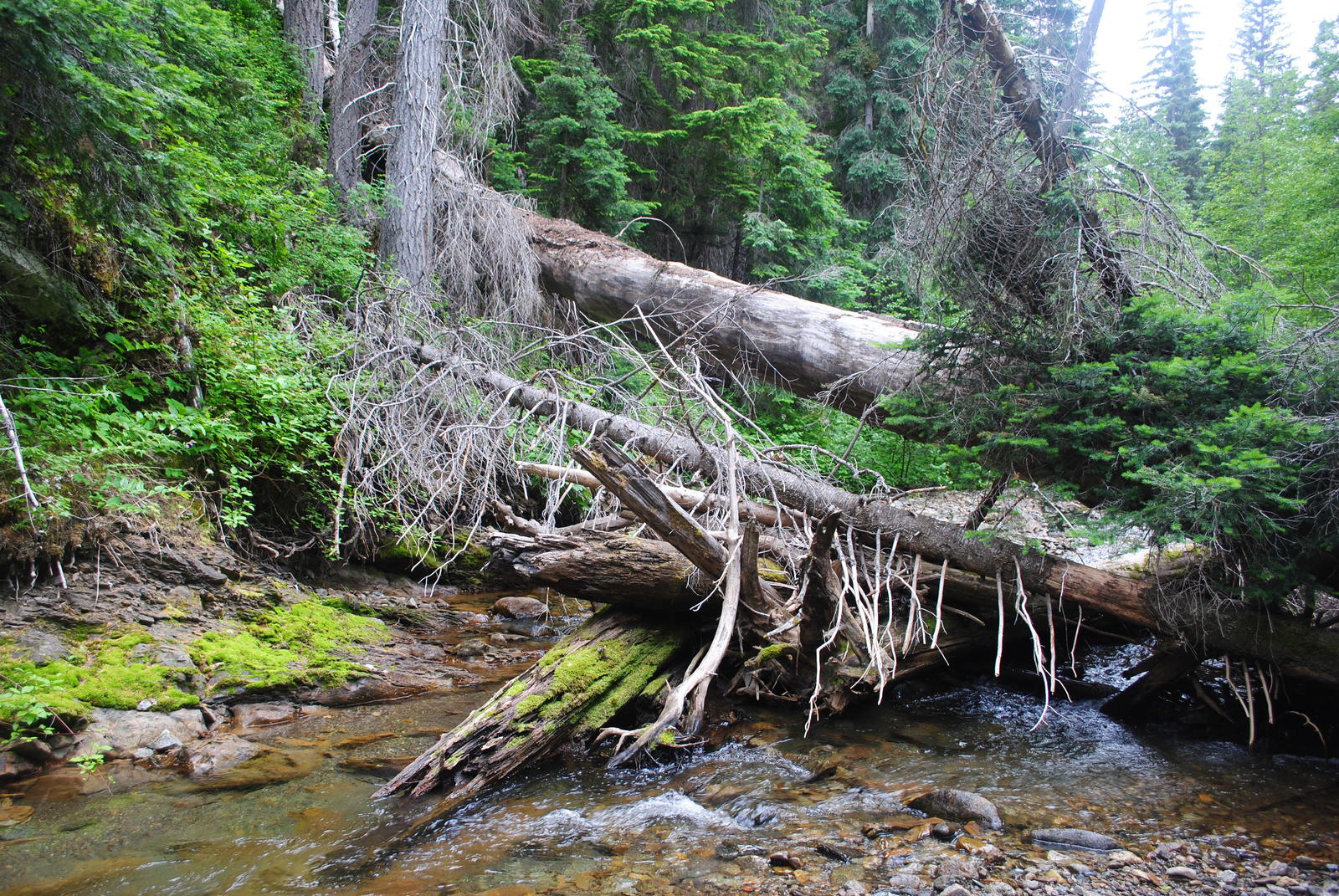
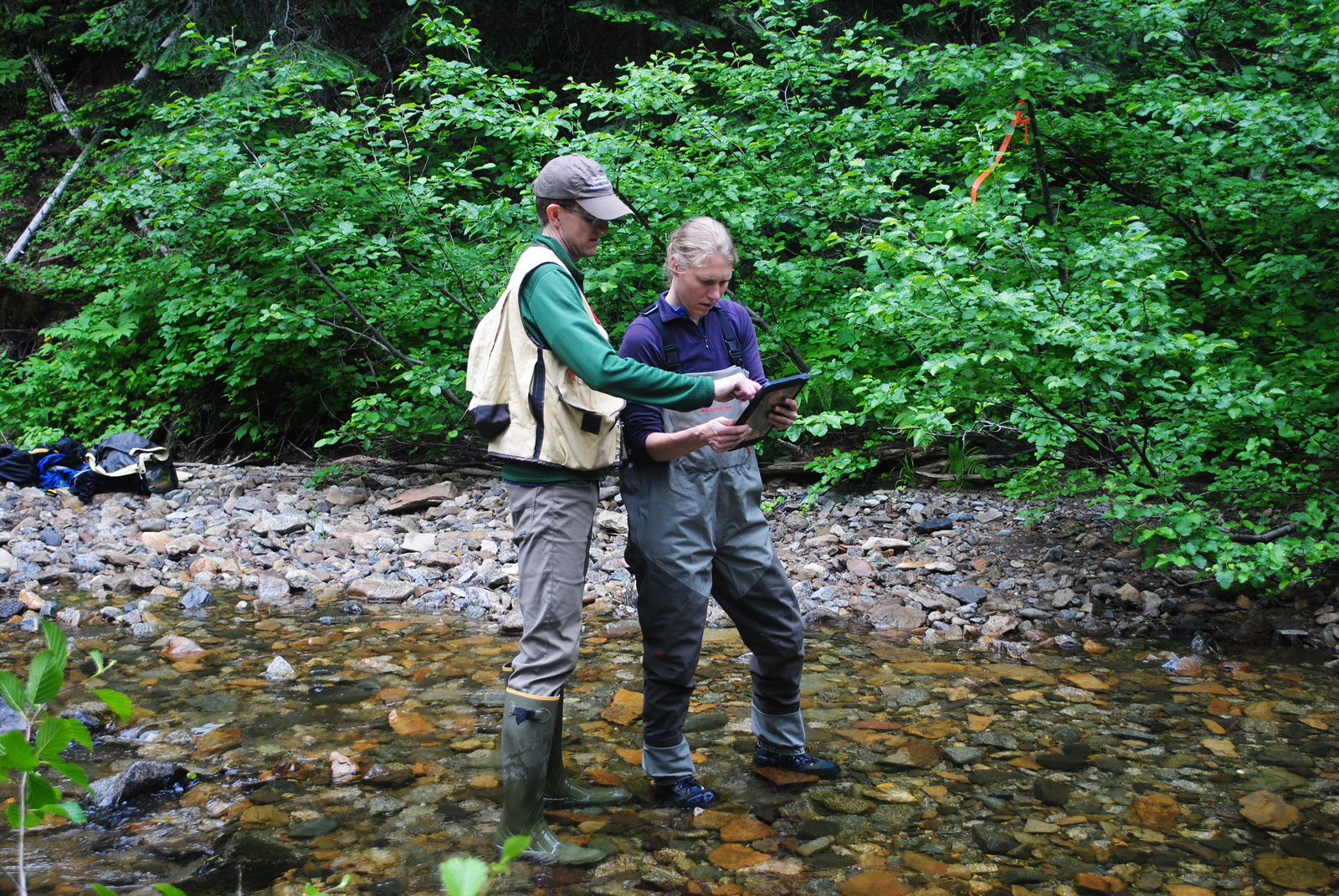
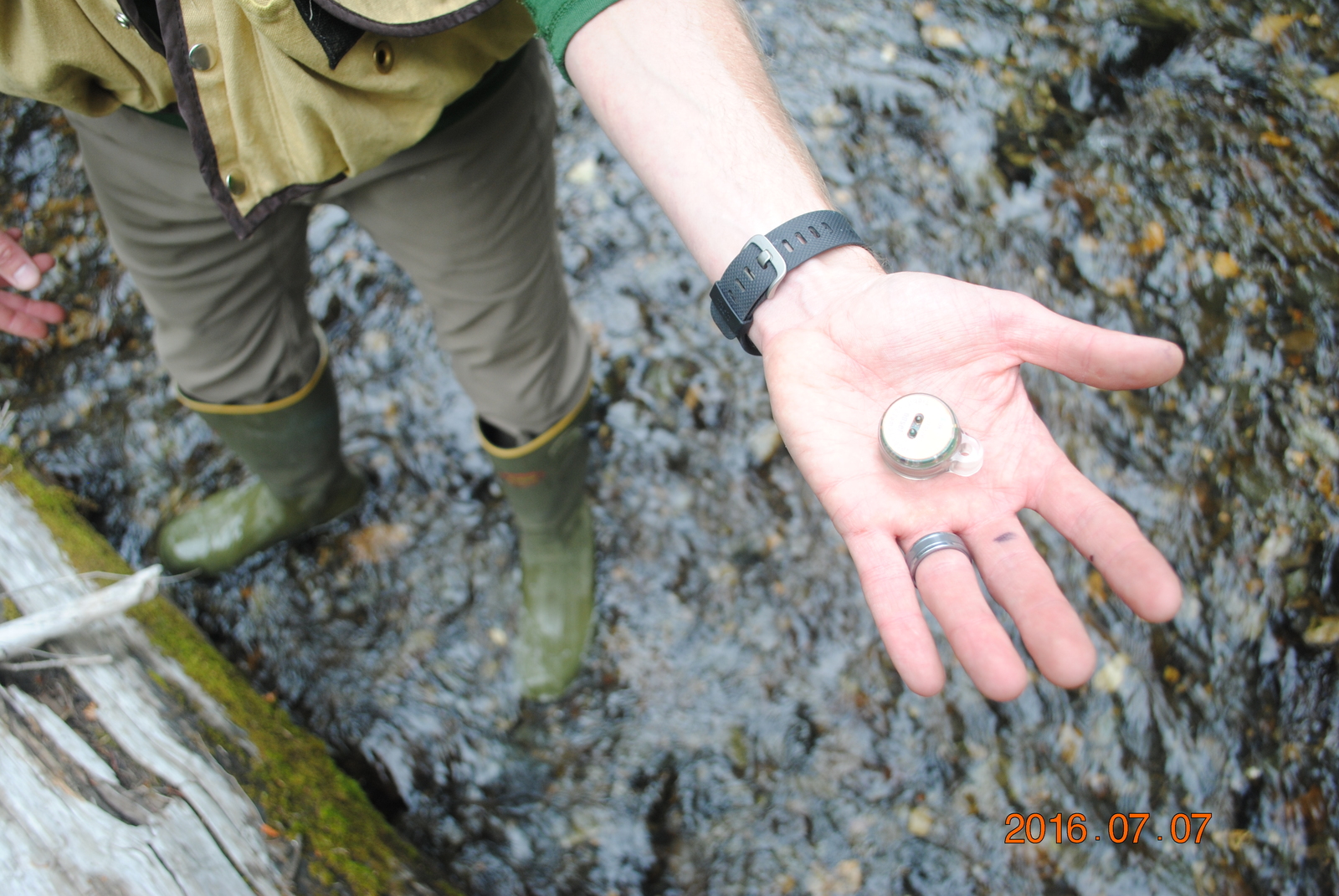
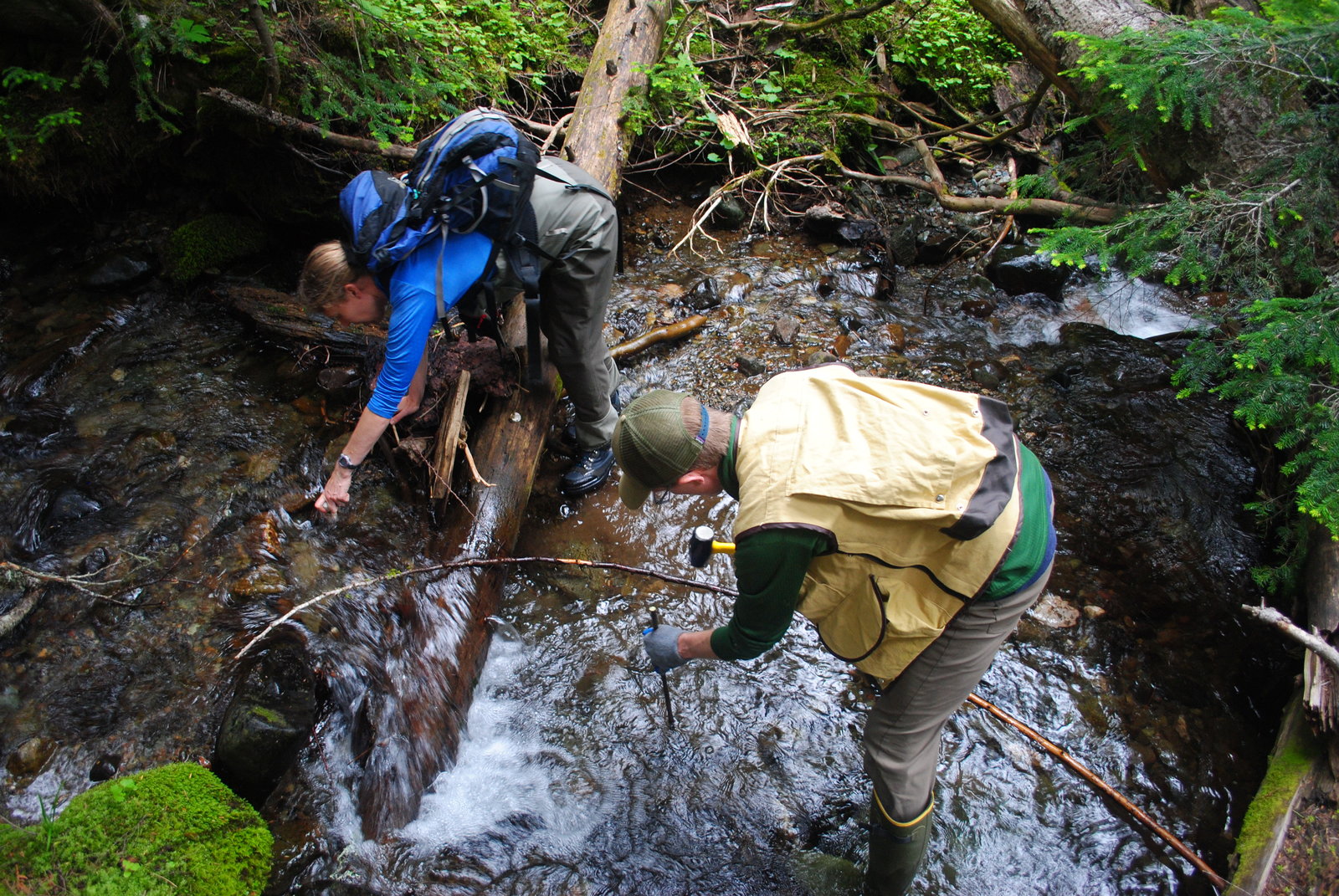


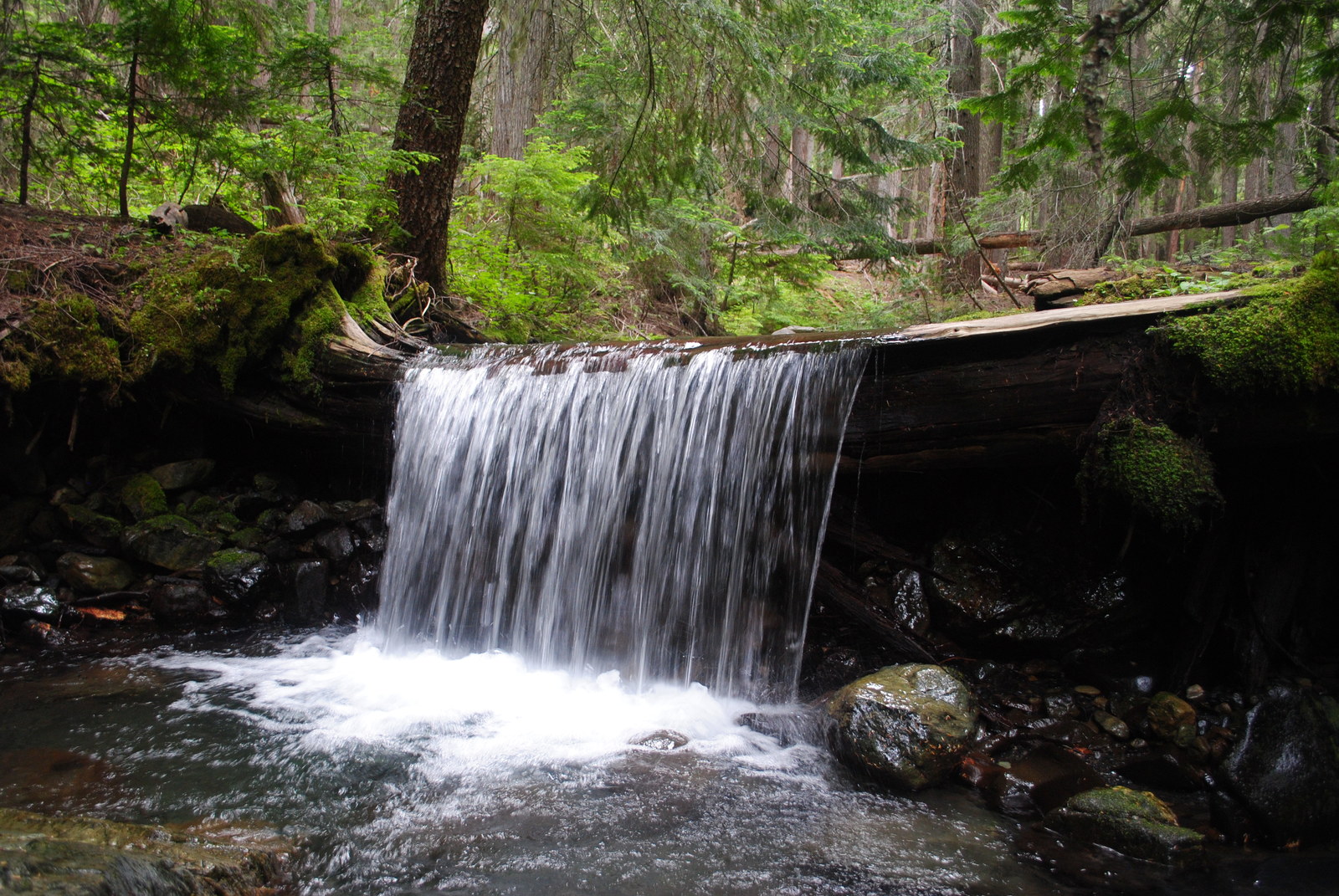
Written & Photographed by Zoe van Duivenbode, Marketing Intern
Another day in the field found Nature Conservancy staff on an adventure in search of GPS locations scattered throughout our Taneum Creek property in the central cascades. In order to continue previous years of stream temperature data collection, TNC’s aquatic ecologist, Emily Howe, and senior forest ecologist, Ryan Haugo, put on their waders and rain boots and embarked on a bushwhacking, log climbing, upstream mission.
By recording stream temperature, our scientists can determine what impact surrounding land use has on nearby stream habitats and can track short-term and long-term temperature fluctuations. Monitoring stream temperature is important because it influences the health, abundance and habitat suitability for fish and other aquatic life. Fish species, such as steelhead and bull trout, were historically present in central cascade streams and as a part of TNC’s conservation plan, our scientists aim to continue data collection which will help guide restoration treatments and protect endangered fish and wildlife species. Check out the slideshow above to follow our day in the field!
All About Orcas
Written by Zoe van Duivenbode, TNC Intern
Photo by Walt Kochan; Joel Rogers
June is officially Orca Month! These marine mammals are so magnificent they deserve a whole month filled with orca appreciation and fun educational events! Recently, orcas have been coined as the first non-human species whose evolution has been influenced by each group’s unique cultural differences, such as hunting methods and vocalization. While certain groups of orcas snack on sting-rays and squid, other groups, like the local Southern Resident Killer Whales exclusively feed on chinook salmon and other fish!
For the entire month of June, dedicated orca lovers and various organizations unite to help spread the word about the rapidly declining population of the Southern Resident Killer Whales. Between the years of 1995 to 2001, the Southern Resident Killer Whale population decreased by 20% and as of December 2015, our resident pods reached a total of 84. One of the most detrimental threats to our underwater neighbors involves the reduction of chinook salmon populations and their habitat. The Orca-Salmon Alliance, The Center for Whale Research, and the Orca Network are just a few organizations that are hosting educational events highlighting the important relationship between the Southern Resident Killer Whales, salmon and a healthy Puget Sound ecosystem over drinks, picnics, storytelling and music. Visit The Orca Month page to find all the fun events happening near you!
The Nature Conservancy is hard at work protecting both habitat and food supply for the Southern Resident Killer Whales. TNC’s efforts to decrease the amount of toxic stormwater runoff that drains into the Puget Sound will help create a cleaner home for all marine life, including orcas! Check out how TNC’s plans to solve stormwater issues in our cities to help increase our region’s salmon population, which in turn, increases our Southern Resident Killer Whale population!












